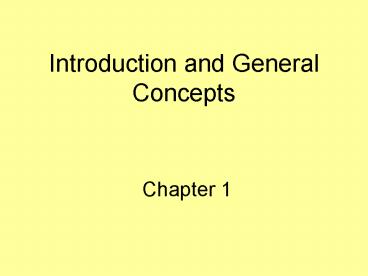Introduction and General Concepts - PowerPoint PPT Presentation
1 / 4
Title:
Introduction and General Concepts
Description:
... Functional/Control/Job Parallel Granularity Analysis of Parallel Algorithms Elementary Steps: computational and routing steps Running Time & Time Optimal ... – PowerPoint PPT presentation
Number of Views:64
Avg rating:3.0/5.0
Title: Introduction and General Concepts
1
Chapter 1
- Introduction and General Concepts
2
References
- Selim Akl, Parallel Computation Models and
Methods, Prentice Hall, 1997, Updated online
version available through website. - Selim Akl, The Design of Efficient Parallel
Algorithms, Chapter 2 in Handbook on Parallel
and Distributed Processing edited by J.
Blazewicz, K. Ecker, B. Plateau, and D. Trystram,
Springer Verlag, 2000. - Ananth Grama, Anshul Gupta, George Karypis, and
Vipin Kumar, Introduction to Parallel Computing,
2nd Edition, Addison Wesley, 2003. - Harry Jordan and Gita Alaghband, Fundamentals of
Parallel Processing Algorithms Architectures,
Languages, Prentice Hall, 2003. - Michael Quinn, Parallel Programming in C with MPI
and OpenMP, McGraw Hill, 2004. - Michael Quinn, Parallel Computing Theory and
Practice, McGraw Hill, 1994 - Barry Wilkenson and Michael Allen, Parallel
Programming, 2nd Ed.,Prentice Hall, 2005.
3
Outline
- Need for Parallel Distributed Computing
- Flynns Taxonomy of Parallel Computers
- Two Main Types of MIMD Computers
- Examples of Computational Models
- Data Parallel Functional/Control/Job Parallel
- Granularity
- Analysis of Parallel Algorithms
- Elementary Steps computational and routing steps
- Running Time Time Optimal
- Parallel Speedup
- Speedup
- Cost and Work
- Efficiency
- Linear and Superlinear Speedup
- Speedup and Slowdown Folklore Theorems
- Amdahls and Gustafons Law
4
Reasons to Study Parallel DistributedComputing
- Sequential computers have severe limits to memory
size - Significant slowdowns occur when accessing data
that is stored in external devices. - Sequential computational times for most large
problems are unacceptable. - Sequential computers can not meet the deadlines
for many real-time problems. - Many problems are distributed in nature and
natural for distributed computation

